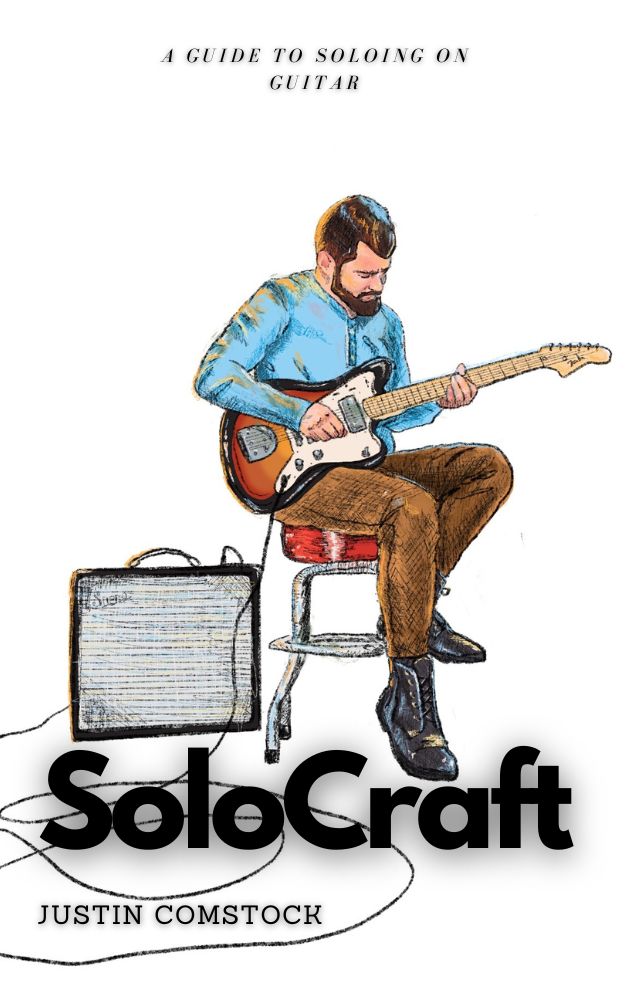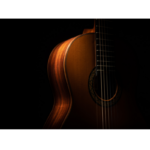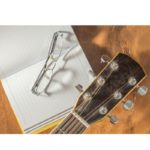When it comes to soloing on the guitar, technical ability alone isn’t enough to captivate an audience. You can play the fastest, most intricate licks, but if your phrasing lacks nuance and emotion, your solos might fall flat. Guitar phrasing is what separates a good guitarist from a truly great one. It’s the art of taking individual notes and arranging them in a way that tells a story, creates tension, and evokes emotion.
In this blog post, we’ll explore four different ways to enhance your guitar phrasing, drawn from the concepts in SoloCraft—my guide to mastering the art of guitar soloing. You’ll learn how to approach phrasing like a storyteller, using timing, dynamics, and articulation to elevate your playing.
1. Pausing for Impact: The Power of Silence
One of the most underrated aspects of guitar phrasing is knowing when not to play. Silence can be just as powerful as the notes you choose to play, and strategic pauses can add drama and tension to your solos. In SoloCraft, I refer to this technique as the art of breathing in your phrasing. Just like a great speaker uses pauses for emphasis, a great guitarist can use silence to make their solos more impactful.
How to Use Pausing in Your Guitar Phrasing:
- Create tension and release: Imagine playing a fast, aggressive run of notes, then suddenly pausing right before you resolve to the root note. This creates a sense of tension, making the eventual resolution even more satisfying for the listener.
- Pacing your solo: By inserting pauses between phrases, you give the audience time to digest what you’ve just played. This is especially effective in slower blues or ballad solos, where space and silence are part of the emotional landscape.
- Adding drama to your bends and slides: When you’re executing a slow bend or slide, leave a brief moment of silence before the next note. This allows the listener to focus on the movement and feel the full emotional weight of the phrasing.

Download the ebook “SoloCraft”!
SoloCraft is the ultimate guide to mastering guitar soloing, designed for players of all levels. Packed with step-by-step lessons, pro-level techniques, and real-world examples, SoloCraft teaches you how to navigate the fretboard, craft expressive solos, and unlock your full potential as a lead guitarist. Whether you’re improvising, building speed, or adding emotion to your playing, SoloCraft gives you the tools to solo like a pro.
Download Now
Guitar Example:
Think of B.B. King’s famous phrasing in the song “The Thrill Is Gone.” He’s not shredding or playing fast; instead, he leaves space between his notes, making each one more meaningful. His pauses create a dialogue, as if the guitar is having a conversation with the listener.
Exercise:
Take a simple pentatonic scale and practice playing through it, but add a pause after every few notes. Focus on how the silence creates anticipation and tension. Try to vary the length of your pauses to see how it changes the feel of your solo.
2. Phrasing with Dynamics: Control Your Volume for Emotional Effect
In SoloCraft, I talk about dynamic phrasing as a tool for shaping the emotional arc of a solo. Playing at a constant volume can become monotonous, but incorporating dynamics—soft and loud playing—adds dimension to your solos and allows you to emphasize key moments. Dynamics are especially powerful when used to complement the song’s mood or create contrast between sections of your solo.
How to Use Dynamics in Your Guitar Phrasing:
- Start soft, build up: Start your solo with a soft, gentle touch, then gradually build up the intensity. This technique is particularly effective in longer solos, where you want to take the listener on a journey.
- Accent key notes: Use louder attacks on specific notes to draw attention to important parts of the phrase. For example, when you hit the root note or the resolution of a bend, accent it with a bit more volume to give it weight.
- Use dynamics for contrast: Switch between soft and loud sections within the same solo to keep the listener engaged. This technique works well when transitioning from a slow, melodic section to a faster, more intense part of the solo.
Guitar Example:
David Gilmour’s playing in Pink Floyd’s “Comfortably Numb” is a masterclass in dynamic phrasing. He starts his solo with soft, expressive bends and builds up to a powerful climax. The contrast in volume helps create an emotional journey that leaves a lasting impact on the listener.
Exercise:
Take a simple 12-bar blues progression and play a solo over it. Start your solo at a low volume, using gentle picking, and gradually increase your volume as you move through the progression. Focus on how the changes in dynamics affect the emotional tone of your solo.
3. Bending and Vibrato: Adding Emotional Texture
Bends and vibrato are two of the most iconic techniques in guitar phrasing, and they’re a cornerstone of the expressive style discussed in SoloCraft. A well-executed bend or vibrato can inject emotion into even the simplest melody, making your solo stand out and connect with the listener on a deeper level.
How to Use Bends and Vibrato in Your Guitar Phrasing:
- Master the slow bend: A slow, deliberate bend can create a powerful emotional statement. Instead of rushing through the bend, take your time reaching the target note. The tension created by the gradual rise in pitch gives the note more emotional weight.
- Use vibrato to sustain emotion: Vibrato adds a singing quality to your notes, helping them sustain and resonate. It’s a subtle technique, but when done well, it can make your phrasing sound more polished and expressive.
- Mix wide and narrow vibrato: Experiment with different vibrato widths—sometimes a wide, dramatic vibrato can add intensity, while a narrow vibrato can create a more delicate, nuanced sound.
Guitar Example:
Stevie Ray Vaughan’s version of “Texas Flood” is an excellent example of how bends and vibrato can transform a solo. His use of wide, powerful bends and smooth vibrato gives his solos a fiery, emotional quality that defines his blues-rock sound.
Exercise:
Take a pentatonic scale and practice bending up to the target note slowly, focusing on accuracy and control. After each bend, add vibrato to sustain the note. Experiment with different speeds and widths of vibrato to see how they affect the phrasing.
4. Phrasing with Rhythmic Variation: Break Free from Repetition
One of the best ways to make your guitar phrasing more interesting is by varying the rhythm of your phrases. In SoloCraft, I emphasize the importance of rhythmic creativity as a tool for making your solos feel fresh and dynamic. Too often, guitarists fall into the trap of playing phrases that all follow the same rhythmic pattern. By changing up the timing of your notes, you can add unpredictability and excitement to your playing.
How to Use Rhythmic Variation in Your Guitar Phrasing:
- Syncopation: Play off the beat or emphasize unexpected beats in the measure. Syncopation can create a sense of tension and movement, making your solo feel more unpredictable.
- Change phrase lengths: Instead of sticking to standard 4- or 8-beat phrases, try varying the lengths of your phrases. This can make your solos feel more conversational, as if you’re telling a story with ebbs and flows.
- Use triplets and sixteenth notes: Experiment with fitting triplets or sixteenth notes into your solos, especially when playing over slower rhythms. These faster note groupings can add a burst of energy and excitement to your phrasing.
Guitar Example:
John Mayer’s phrasing in “Gravity” showcases excellent rhythmic variation. Mayer frequently shifts between syncopated rhythms and long, drawn-out notes, creating a sense of fluidity and unpredictability in his solos.
Exercise:
Take a simple lick and play it in a variety of rhythmic patterns. Try playing the lick as straight eighth notes, then try syncopating it or turning it into triplets. Listen to how each variation changes the feel of the phrase.
Conclusion: Master Your Guitar Phrasing
Guitar phrasing is what makes your playing personal and expressive. By focusing on techniques like pausing, dynamics, bends, vibrato, and rhythmic variation, you can elevate your solos and bring out the emotion in your playing. The concepts outlined in SoloCraft are designed to help you approach phrasing as a storyteller—crafting solos that speak directly to your audience.
Remember, phrasing is an ongoing journey. As you continue to explore different ways to use phrasing, you’ll develop your own unique voice on the guitar. So keep experimenting, keep playing, and let your guitar do the talking.
By mastering these four phrasing techniques, you can transform your playing and captivate listeners every time you solo. Guitar phrasing isn’t about how many notes you play—it’s about how you play them. Dive into the exercises, apply these principles, and watch as your solos take on new life and expression.

Download the ebook “SoloCraft”!
SoloCraft is the ultimate guide to mastering guitar soloing, designed for players of all levels. Packed with step-by-step lessons, pro-level techniques, and real-world examples, SoloCraft teaches you how to navigate the fretboard, craft expressive solos, and unlock your full potential as a lead guitarist. Whether you’re improvising, building speed, or adding emotion to your playing, SoloCraft gives you the tools to solo like a pro.
Download Now










